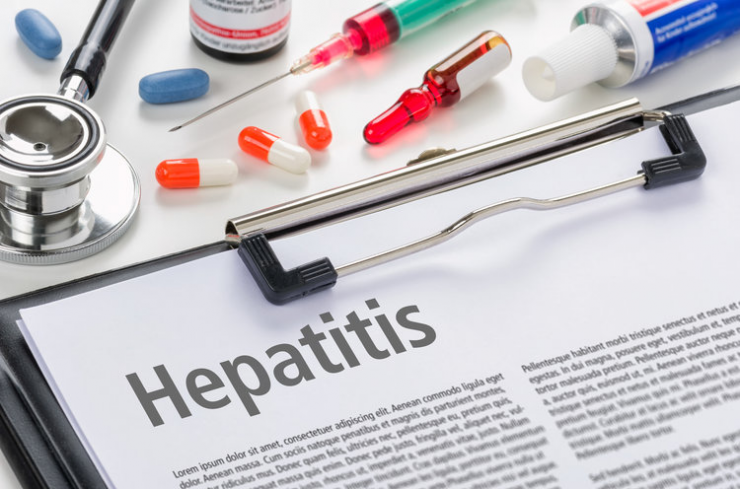Arbutus Biopharma (NASDAQ:ABUS) is developing a portfolio of drug candidates, each with different mechanisms of action that it believes will result in a combination therapy to cure patients infected with hepatitis B virus.
“The key to a therapeutic success in HBV is combining drugs to cripple the functions of the virus and allow the immune system to respond to the infection,” Mark Murray, president and CEO, says in an interview with BioTuesdays. “We are wedded to this strategy rather than a particular asset or mechanism,” he adds.
Dr. Murray explains that a combination therapy that is successful in driving improved outcomes for HBV patients will need aggressive suppression of HBV replication and HBV surface antigen (HBsAg) production, along with stimulating or restoring the host immune response.
“Our goal is to rapidly and completely terminate the replication of HBV DNA,” he points out. “This involves targeting multiple steps in the viral replication process simultaneously.”
Dr. Murray says that the hepatitis B virus uses multiple mechanisms to evade and suppress the immune system and establish a persistent infection. One of these mechanisms for immunosuppression is the release of viral proteins, particularly HBsAg, which is secreted from infected cells.
“We have multiple programs in development targeting the virus directly as well as stimulating and reactivating the host immune system, including the elimination of viral proteins that inhibit the immune response,” he adds.
One challenge in addressing chronic HBV is the existence of the cccDNA structure found in the host cells’ nucleus. Dr. Murray says Arbutus is addressing this cccDNA by developing drugs directly targeting cccDNA as well as immune reactivation agents, which could clear cccDNA-containing cells.
In a recent HBV industry research report, William Blair analyst, Katherine Xu, said Arbutus has the broadest HBV pipeline in the industry. Arbutus has disclosed eight separate programs, with seven mechanisms of action, targeting HBV at multiple points along the HBV life cycle.
“We believe that Arbutus’ strategy of housing a broad array of HBV programs under one roof to test various combinations might give the company a strategic advantage over other companies focusing on a specific mechanism,” she added.
The lead compound in Arbutus’ arsenal is ARB-1467, which is a small interfering RNA molecule designed to silence the expression of all viral transcripts. ARB-1467 has a unique three-trigger design to target all HBV transcripts and prevent production of all antigens, Dr. Murray states.
Next in line is ARB-1740, a next-generation candidate, with potentially higher potency and more ease of administration, and AB-423, which is a core protein, or capsid assembly, inhibitor. Arbutus plans to begin Phase 1 studies of ARB-1740 and AB-423 in the current first quarter.
Last month, Arbutus reported new results from an ongoing Phase 2 study of ARB-1467 in chronically infected HBV patients on stable nucleoside or nucleotide therapy. Single-dose results demonstrated significant reductions in serum HBsAg levels and multi-dose results showed a step-wise, additive reduction in serum HBsAg after three monthly treatments.
Top line results from cohorts 1 and 2 have been reported and patients in cohort 3 have been dosed, with no drug-related discontinuations. Dr. Murray says final data from the 24 patients in cohorts one-through-three is scheduled for release in the first half this year.
A fourth cohort of 10-to-15 patients will begin bi-weekly dosing with ARB-1467 in the first quarter, with data available in the second half this year. “We want to see if dosing closer to the nadir of monthly dosing will result in deeper reductions of the HBV surface antigen,” he adds.
Also in December, Arbutus and Spring Bank Pharmaceuticals (NASDAQ:SBPH) agreed to perform collaborative preclinical HBV studies. The accord involves the co-administration of Spring Bank’s SB 9200, an orally available selective immune-modulator, and Arbutus’ AB-423, a capsid assembly inhibitor.
Dr. Murray says the combination of SB 9200 and AB-423 is the first step in evaluating how a capsid assembly inhibitor can be combined with an oral immune-modulator in the treatment of chronic HBV and potentially lead to novel combination therapeutic strategies for patients with chronic HBV.
He explains that AB-423 is designed to block HBV DNA replication by forming empty capsids. It also has been shown to inhibit replenishment of cccDNA. Arbutus plans to initiate a Phase 1 study with AB-423 in healthy volunteers in the current quarter.
At the 2016 meeting of the American Association for the Study of Liver Diseases, Arbutus presented encouraging preclinical data that supports the combination of AB-423, ARB-1740 and the standard of care in treating HBV.
The triple-drug combination resulted in an even greater response than using two of Arbutus’ drug candidates, Dr. Murray says. “We believe this is the first triple combination study that indicated a treatment benefit in vivo. Owning all of our combination components enables rapid and effective evaluation of different mechanisms in-house.”
Dr. Murray also notes that all of the company’s preclinical combination studies have found additive or synergistic efficacy of the combination of drugs as well as no antagonism, where one drug inhibits the work of the other drug.
“Our data support the strategy of developing drug combinations to deliver a cure for chronic HBV infection,” he adds. “Inclusion of new agents with complementary mechanisms of action such as capsid inhibitor, AB-423, and the siRNA agent, ARB-1740, alongside current standard-of-care drugs could provide improved efficacy in the clinic.”






